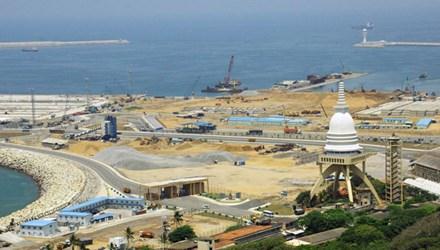
Commentary By Tham Soon Seong
Sri Lanka’s continuing economic crisis since February this year has been only getting worse, with no clear signs of how the current crisis could be overcome. The latest news from the island state is the issue of arrest warrant on seven people including former Prime Minister Mahinda Rajapaksa on criminal intimidation and aiding and abetting to attack a peaceful protest.
While bringing justice to the people might be easier if the courts retain their independence and stay on course, the economic troubles may not be over so soon. The economic challenges for the country has been rising by the day.
According to the latest report, the total external debt of the city state is around US$58 billion and that the country is on the brink of bankruptcy and has suspended payments on foreign loans, which total over US$50 billion with an estimated US$8.6 billion due this year.
Foreign exchange reserves were at an estimated US$2.31 billion in February this year but by March it had dropped to US1.93 billion.
Overall reserves have crashed by 70 percent in just 2 years, Reuters reported. Usable forex reserves is now down to under US$50 million.
The island state which became an independent nation in 1948 , with a current population of some 22 million, is a member of the Commonwealth of Nations.
Many other countries from the Commonwealth nations, of similar sizes that became independent after WWII are doing well today. These countries include Singapore, New Zealand, Malaysia. Non-commonwealth countries of nearlt the same size or even smaller, such as Denmark, Norway, Iceland, Ireland, Qatar, Luxembourg are models and examples that Sri Lanka could adopt or follow, but why is Sri Lanka after near 75 years is still in this dire state of affairs?
An analysis of the country’s poor economic management has given glaring incidents of abuse of power, financial mismanagement, corruption, and poor economic planning.
All these years, Sri Lanka’s revenue lived in a very narrow income base that included tourism/leisure economy, agriculture, minimum industrial activities with no advancement into modern income earners such as modern industries, manufacturing, digital economies or the technologies to support them. It failed to keep in touch with global changes.
Many of the weaknesses were exposed by none other than the country’s Central Bank Governor P.Nandalal Weerasinghe who has not only threatened to resign but has warned of a collapse in the economy.
“Why did we run out of dollars? Why do we have huge rupee and dollar debt? Why did we continuously borrow? Even after the default, why are we going behind lenders and begging for more loans? Because we are a nation of consumers, not a nation of producers.
“We are a nation of 22 million consuming more than we are generating (or producing) ; Obviously if you are consuming more than you earn, you end up borrowing.”
In short, the country will continue in the short term to live on borrowed money. During this state of dire situation, no institutions or countries would be willing to give more loan. Thus the threat of bankruptcy.
A state of anarchy is not too far fetched, if the stretch in all areas continue to expand. With riots still on in some places, civil disturbances, and the uncertainty in the political landscape, the hope is now on the incoming Prime Minister and government to sort out the crisis.
The current state of affairs will scare away lenders like the IMF, international capital market, while the traditional lenders and supporters such as China, Japan, India are said to be avoiding further commitments.
Amid this scenario, there are several options and short term remedies that could pave the way forward for a country that once enjoyed a dynamic economy:
- Dissolve the current parliament and elect a new government to take over with strategies to resuscitate the economy
- Change the system of Government by abolishing the Presidential system to avoid over power concentration and thus abuse of power
- Declare state of emergency, suspend the parliament and rule by council of renown economists, professional consultants, social leaders
- Seek a possible federation with India and continue to liver under a bigger “ umbrella” to sustain the growth
- Seek an international moratorium and suspend the debt, re-schedule the repayment of the US$50 billion debt in a longer duration, say 10 to 15 years spend to sustain the domestic economy. The reported US$80 billion GDP of 2022/2033 would not be sufficient to resuscitate the economy and sustain consumption.
Meanwhile, there are many lessons to learn from what is going on in Sri Lanka. For Malaysian politicians, it can be taken as a fine warning on how Malaysia must guard against falling into a similar trap.
Malaysia with a population of 32 million, and current foreign reserves of US$115,624,92 billion or close to RM500 billion, and a reported foreign debt of some RM1.00 trillion should be very cautious in managing her economy.
While Malaysia has a more diverse and wider economic structure and sources of revenue with an estimated GDP growth of between 3.5 percent and 4 percent, and capable of sustaining a healthy economy, it should continue to work at containing if not keeping the abuse of power and corruption at bay.
Tham Soon Seong from Penang is an active economic and political observer. The views expressed here are that of the author’s and not necessarily that of the Weekly Echo’s.